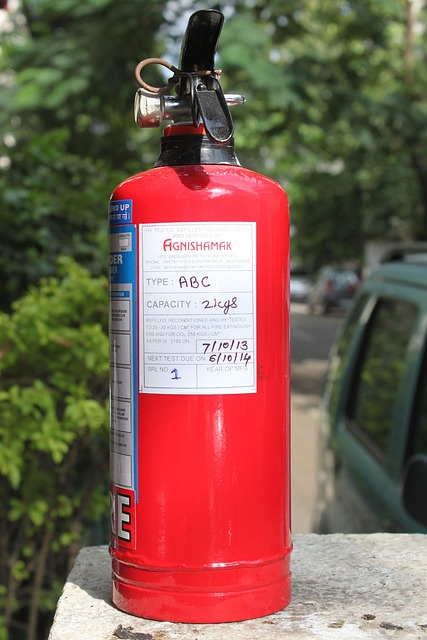Fires can break out at any moment, and their rapid spread can lead to devastating consequences. Whether at home, in the office, or in a commercial space, having the right tools to manage a fire in its early stages is crucial. Among these tools, fire extinguishers stand as the first line of defense. But what exactly is a fire extinguisher, and how do you use it effectively? Let’s dive into understanding fire extinguishers, their types, and how to choose the right one for your space.
What is a Fire Extinguisher?
A fire extinguisher is a portable device designed to put out small fires or contain them until help arrives. It works by releasing a substance that either smothers the fire, cools the fuel, or interrupts the chemical reaction fueling the fire. Fire extinguishers come in various types, each designed to handle specific classes of fires. The goal is to stop a fire before it spreads uncontrollably.
Types of Fire Extinguishers
Fire extinguishers are categorized based on the type of fire they are intended to put out. The five primary classes of fires are:
- Class A: Fires involving ordinary combustible materials like wood, paper, or cloth.
- Class B: Fires involving flammable liquids such as gasoline, oil, or grease.
- Class C: Fires involving electrical equipment like computers or appliances.
- Class D: Fires involving flammable metals such as magnesium or sodium.
- Class K: Fires involving cooking oils or fats, commonly found in kitchens.
Each class of fire requires a different type of extinguisher, so it’s important to select the correct one based on the risk in your environment.
Types of Fire Extinguishing Agents
Fire extinguishers use different agents to fight fires. The most common ones include:
- Water: Effective for Class A fires, but should never be used on electrical or flammable liquid fires.
- Foam: Can be used for Class A and B fires, smothering the fire by forming a layer on top of the burning material.
- Dry Chemical: The most versatile type, suitable for Class A, B, and C fires. It works by interrupting the chemical reactions within the fire.
- Carbon Dioxide (CO2): Ideal for electrical fires (Class C) as it suffocates the fire without leaving a residue.
- Wet Chemical: Specifically designed for Class K fires, it cools and prevents re-ignition in cooking oil or grease fires.
How to Choose the Right Fire Extinguisher
Choosing the correct fire extinguisher depends on the type of risk in the area. Here’s how you can make an informed decision:
- For Homes: A multi-purpose dry chemical extinguisher (Class ABC) is a good choice for general household use. It’s versatile enough to handle a wide range of fire types, from small kitchen fires to paper or electrical fires.
- For Kitchens: If you’re in a commercial kitchen or have a deep fryer at home, a Class K fire extinguisher, specifically for grease fires, is essential.
- For Offices: Class ABC fire extinguishers are a good choice for office spaces, where there’s a mix of paper, electrical equipment, and other potential fire hazards.
- For Industrial Settings: Depending on the specific risks (flammable liquids, gases, or chemicals), you may need specialized extinguishers like foam or CO2 types.
Fire Extinguisher Maintenance
A fire extinguisher is only effective if it’s in working condition. Regular maintenance is essential to ensure your fire extinguisher is ready when needed. Here’s how to keep it in top shape:
- Check Pressure: Most extinguishers have a pressure gauge. Ensure the needle is in the green zone, indicating that the extinguisher is fully charged.
- Inspect for Damage: Check for any visible signs of corrosion, dents, or cracks in the canister. If the extinguisher is damaged, it might not work correctly.
- Ensure Accessibility: Make sure the extinguisher is easy to access, free from obstructions, and properly mounted or stored.
- Regular Servicing: Fire extinguishers should be serviced annually by a professional. They may also need recharging or replacement if used.
How to Use a Fire Extinguisher: The PASS Method
Knowing how to use a fire extinguisher can save valuable seconds when every moment counts. Follow the PASS technique to operate an extinguisher properly:
- Pull the pin: This will break the tamper seal and allow you to operate the extinguisher.
- Aim the nozzle: Point it at the base of the fire, not at the flames. Aiming at the flames won’t be as effective.
- Squeeze the handle: Apply steady pressure to release the extinguishing agent.
- Sweep from side to side: Move the nozzle across the base of the fire, ensuring you cover the entire area.
When to Use a Fire Extinguisher
While fire extinguishers can be lifesavers, there are situations where using one may not be advisable. If the fire is large, spreading quickly, or you’re unsure of your ability to contain it, evacuate immediately and call emergency services. Additionally, never attempt to fight a fire involving hazardous materials, such as chemicals or flammable gases, unless you are trained and equipped to handle those specific risks.
Conclusion
Fire extinguishers are critical safety devices that should be present in homes, offices, and commercial spaces. By understanding the different types of fire extinguishers and their uses, selecting the right one for your environment, and maintaining it regularly, you can improve your safety and the safety of those around you. Remember: while fire extinguishers are invaluable tools, knowing when to use them and when to evacuate is equally important. Stay prepared, stay safe, and make fire prevention a priority in your daily life.






